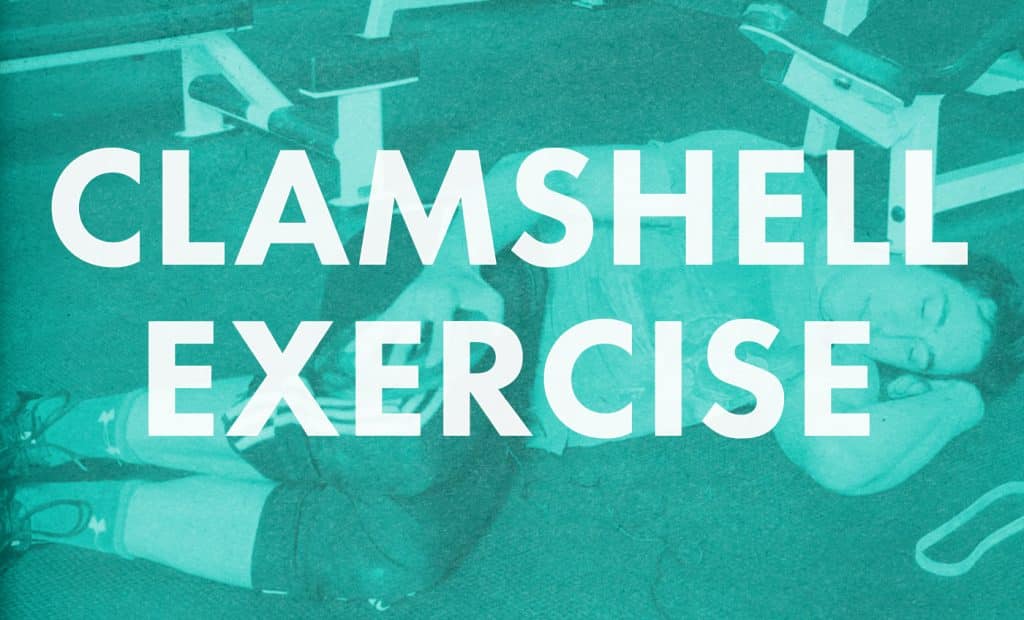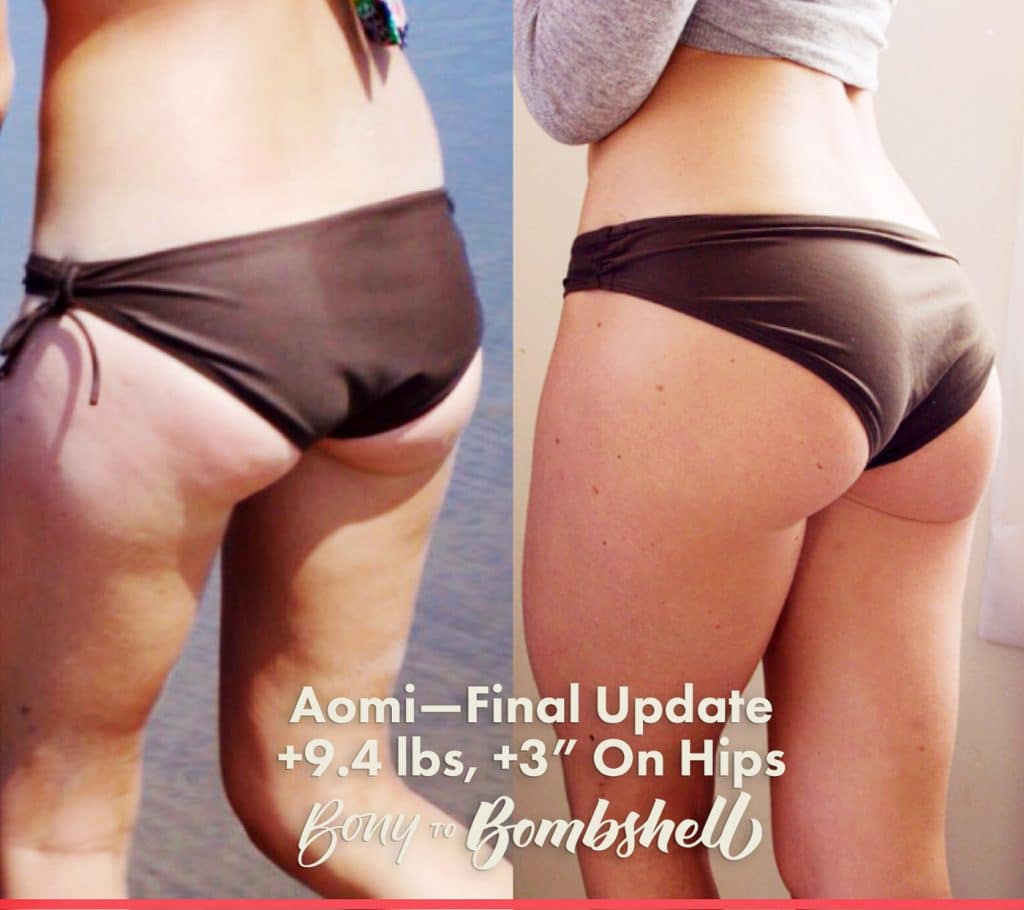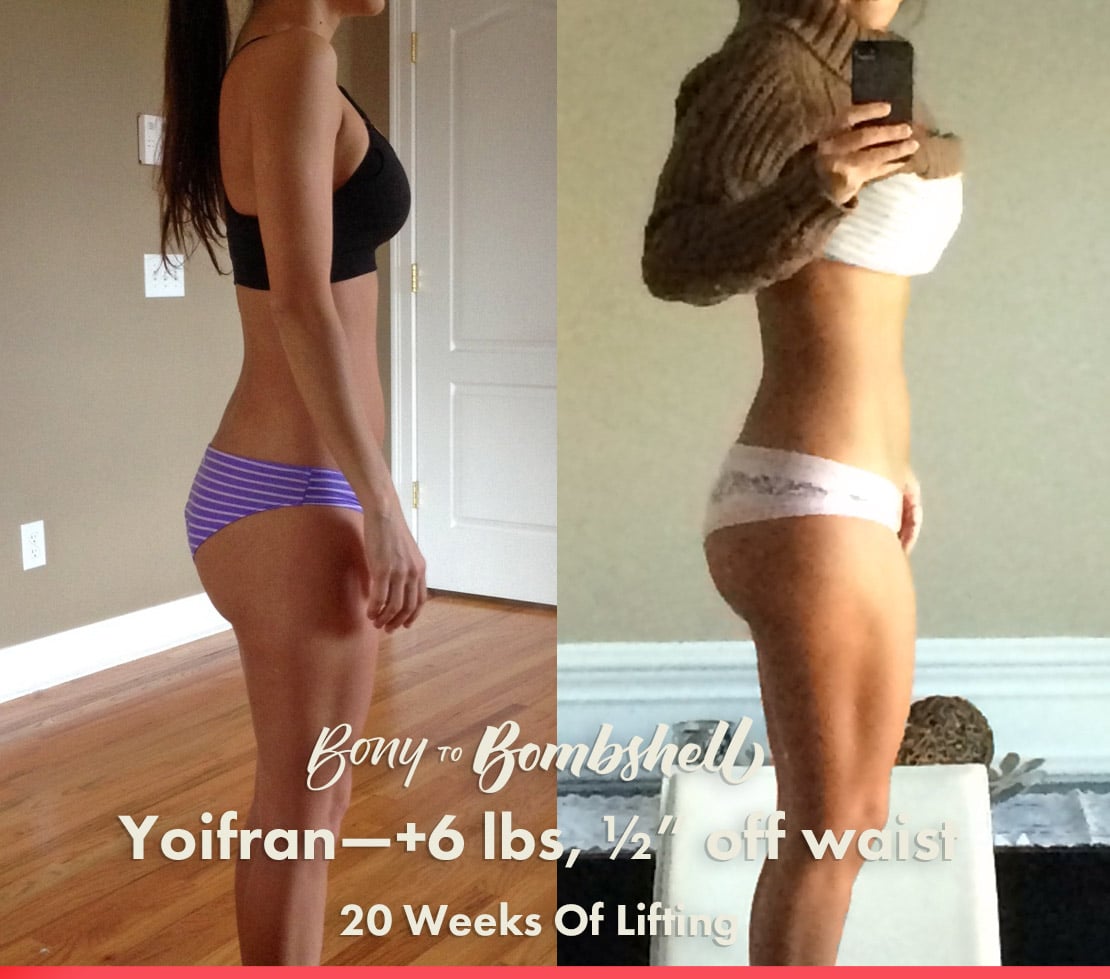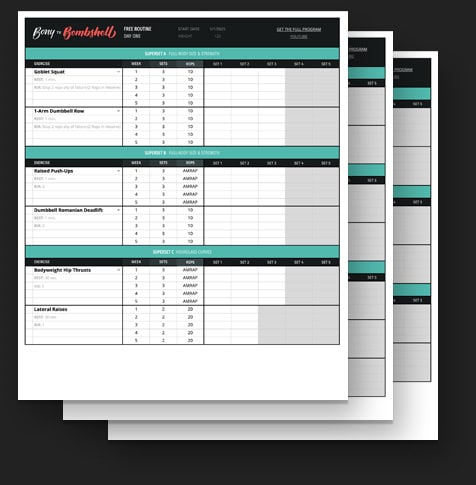
Clamshell Exercise—Overview, How-to, & Tips
The clamshell is an isolation exercise for many of the glute muscles that don’t get stimulated to their full potential with the standard squat or hip thrust movements. For women looking to get the most three-dimensional and athletic glutes, they’ll need to be training the rotation motion of their legs. Clamshells are a great exercise for this. Let’s take a closer look.
Clamshell Exercise Overview
Benefits
To understand the benefits of the clamshell, it helps to understand the four main motions of the glute muscles.
- Hip extension. This is moving your legs back behind you, such as with a Bird Dog exercise.
- Hip external rotation. This is rotating your legs outwardly, like the clamshell.
- Hip transverse abduction. This is you lifting your leg out away from the other leg, like the side leg raise.
- Posterior pelvic tilt. This is you tilting your pelvis forward, such as in any thrusting motion like the glute bridge or hip thrust.
A woman’s largest glute muscle, the gluteus maximus, gets worked well with the posterior pelvic tilt, which is when the hips are moving forward. The maximus gets hit well with squats, glute bridges, and hip thrusts. Compound exercises like these ones are key for working all of the glute muscles since you get to load the exercise up more heavily (because it works more joints at once) and allow the muscles to learn how to work well as a team.
But her glutes, specifically the gluteus medius and minimus, also play a large role in helping rotate the legs outward. While these smaller glute muscles will get stimulated during her compound lifts and see some growth, she can also target them directly for even more growth, leading to a more remarkable shape.
These muscles are located on the side of the butt, a bit more toward the top. The clamshell exercise can help any woman target these often neglected glute muscles, helping to make her hips look more three-dimensional, fuller, perkier (more shape up top), wider, and more athletic.

Muscles Worked
The clamshells mainly work the gluteus medius and minimus, two muscles on the upper side of your butt. Its main benefit is that the clamshell can activate this gluteus medius muscle without allowing the TFL (tensor fasciae latae) muscle from jumping in too much (2013) as it might with other glute exercises.
Required Equipment
You don’t need much equipment for this one. You could even start with just a heavy book. However, to keep things progressing as you get stronger, it can help to have access to the following:
- Weight plates in a variety of weights
- For some variety, short-loop resistance bands
How To Do The Clamshell Exercise: Video Demonstration
Here’s Bony to Bombshell coach Marco demonstrating how to do the clamshells properly in an unweighted form, using a weight plate and using loop resistance bands.
Proper Form Breakdown
- Lay down on one side of your body, supporting your head with your hand.
- Bring your knees up a bit.
- Rotate your knee out while keeping your feet close together.
- Don’t overextend. We’re only trying to work the glute muscles, not rotating your pelvis.
- Lower the knee down under control.
- That’s one rep. Do the number of reps on your workout sheet.
- You should feel a burn on the outer side of your butt as the reps climb higher.
- Make sure to flip over and repeat it on the other side.
Common Mistakes With The Clamshell
- Not adding any resistance. With isolation / single-joint exercises like this, you can easily go too heavy. But you can also go too light. Doing the clamshell without any resistance is fine, but once you are getting beyond 15 reps per side with no problem, it’s time to add some weight. You can use a book or even a light 5-pound weight plate.
- Going too heavy. This is an isolation exercise—we’re trying to isolate the gluteus medius and minimus. If you start off by using a 20-pound plate, you’ll start using your bigger muscles that have no business helping out to rotate your pelvis. Take your time, and use an appropriate weight. Your glutes will get stronger over time.
- Rotating the pelvis. Sometimes to get extra “range,” some people will start moving their whole body. The goal here is only to move the leg, rotating it out, which will isolate the glutes. Nothing else should be moving.
Using The Clamshells In A Workout
Use A Moderate-to-High Rep Range
In research, to optimize for muscle growth and muscle size, you want to choose a weight that you can do 4–40 repetitions with. With that said, you don’t want to be hitting any one-rep maxes with this exercise, though. The clamshell exercise is very isolated, so it’ll need to be quite light. Not only will that prevent any injuries, but a lighter weight will also stop other, larger, more powerful muscles from jumping in to help. Keeping the weight lighter will naturally keep the rep range higher. Anything in the 8-12 rep range (per side) is ideal, but you could also work up to 15 or 20 reps per side.
If you find yourself not able to do 7 reps, use a lighter weight. If you can do more than 15 reps, use a heavier weight. Make sure you always match the reps on each side.
Challenge Yourself But Stop Short Of Failing
Ideally, you’ll stop the clamshells just when you’re just about to fail, but you could still do a couple of reps more. But if you’re a beginner, it’s hard to know exactly how hard you’re pushing yourself. If you aren’t sure if you’re taking your sets close to failure, try doing more reps. Try pushing yourself all the way until you can no longer do any more reps with perfect form. That way, you’ll know what it feels like. You might be surprised that you were a lot stronger than you thought. Next time, stop right before that point of failure.
Start With Two Sets, Then Add More
Start with just a couple of sets, then over time, add more sets as you get stronger. We recommend doing two sets in the first week. Practice your form, find the right weights, and take your time learning the clamshell movement.
Next week, if the sides of your glutes aren’t too sore at the start of each workout, try adding a set to each exercise. If that goes well and you feel ready for more, add another set next week. You can do around 3–6 sets per exercise. Most women will do best with 3–4 sets. If you ever start to feel worn down, or if you’re coming back after a long break, start the cycle over again, going back to just two sets and rebuilding from there.

Rest 1 Minute Between Sets
How long you rest between sets of clamshells isn’t that important. Whether you rest for 2 minutes or 10 minutes, you’ll still stimulate a similar amount of muscle growth. The important thing is that you rest long enough to catch your breath, ensuring that your cardiovascular system doesn’t limit the performance of your muscles. We want to challenge your glute muscles, not just your heart (though your heart will get a good workout, too!).
The main reason to rest for only one minute is because with this isolation exercise, it isn’t too stressful on the whole body, and you won’t need a substantial amount of rest. Keeping your rest times shorter will keep your workouts shorter. You don’t want to spend all day in the gym. But if you need more rest or get interrupted partway through your workout, no problem. Just pick up where you left off.
If you want to blast through your workout even faster, you can do the lifts in a circuit/superset. Do a set of clamshells, rest a minute, then do a set of glute bridges, rest a minute, then do your second set of clamshells, and then do your second set of glute bridges. That way, you’re still giving different muscles in your glutes time to recover between sets, but you’re doing another exercise targeting a different area during the rest period.
Free Routine For Female Beginners: Glute Emphasis With Full Body Workout: Includes The Clamshells
If you don’t have a workout, you might be interested in our full Bony to Bombshell program. A sample beginner’s workout for women that includes glute bridges could look like this:
- Weighted Glute Bridge: 2 sets of 6 reps per side.
- Weighed Clamshells: 2 sets of 10 reps per side.
- Raised Push-Ups: 2 sets of as many reps as you can.
- 1-Arm Dumbbell Row: 2 sets of 10 repetitions.
- Dumbbell Goblet Squats: 2 sets of 10 repetitions.
- Lateral Raises: 2 sets of 10 repetitions.
GET THE free GOOGLE SPREADSHEET OF THE
female BEGINNER’S FULL-BODY with glute targeting WORKOUT

Get the glute targeting workout as a Google spreadsheet. You’ll be able to pick from exercise alternatives, and fill out the sheet.
Plus, we’ll make sure you’re on the Bony to Bombshell newsletter, and send you all of our best women's muscle-building content.
Q&A About The Clamshells
Q: How often should you do the clamshell?
A: Because it’s not a heavy compound exercise, it won’t take days of recovery. You could theoretically do it daily as long as you’re recovering well. But if you’re just looking for optimal results, doing it 1-3x per week, a the end of your lifting workout, which includes compound lifts already hitting the glutes, is plenty.
Q: What are some alternatives to the clamshell?
A: There are lots of variations of the clamshell exercise. Such as feet-raised clamshells, clamshells with your feet pressed against the wall, neutral-ankle clamshells, etc. But these minor variations aren’t all that important for the average female lifter. They all work the same muscles well.
You could try the seated banded abduction for a change of pace:
But as long as you’re hitting the glutes and legs well with compound lifts (Goblet squats, Romanian Deadlifts, step-ups, etc.), then that will take care of most of what you’re body needs. Then the clamshells can work as a targeted way to hit the muscles doing leg rotation.
If you want to do some leg rotation in an alternative way, there are lots of different ways to do this, such as with bowler squats or fire hydrants.
Bowler Squats
Fire Hydrants
What Next?
If you liked this article, you’d love our muscle-building newsletter. We’ll keep you up to date on all the latest muscle-building information for women. Or, if you want us to walk you through the process of gaining muscle and strength, including teaching you the exercises, giving you a structured 5-month workout program, a complete diet guide, a recipe book, and online coaching/customization, check out our Bony to Bombshell Program.



FREE women's Muscle Growth MINI-COURSE
Get our 5-part female bulking mini-course that covers everything you need to know about:
Here are some related articles